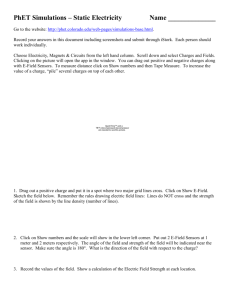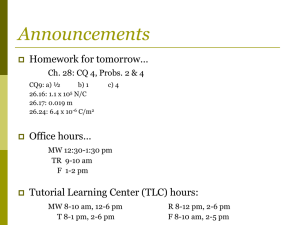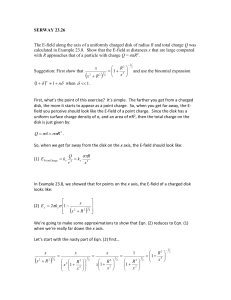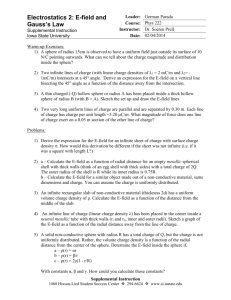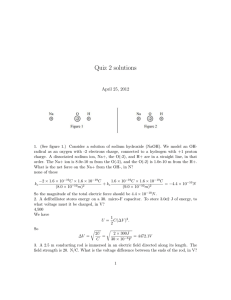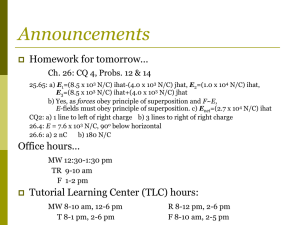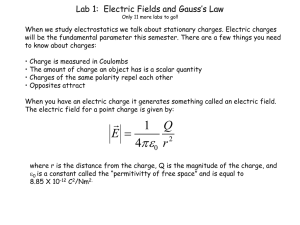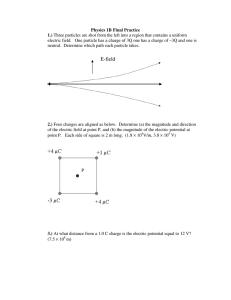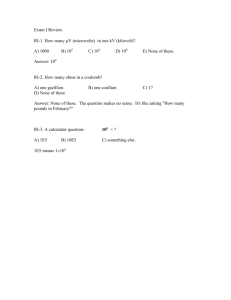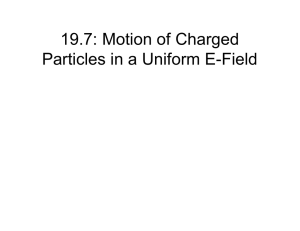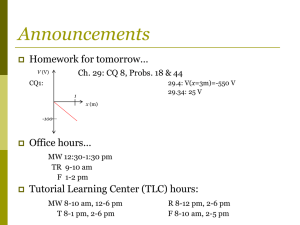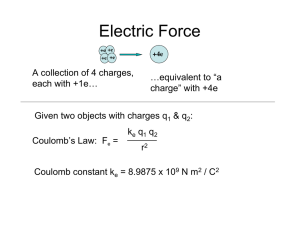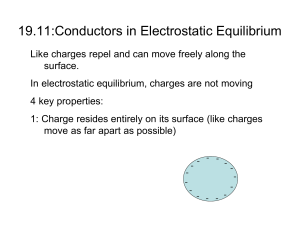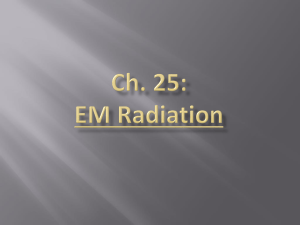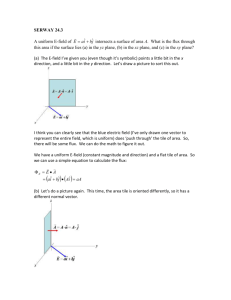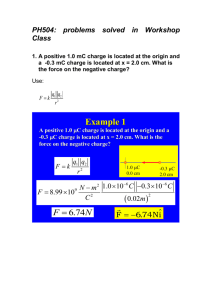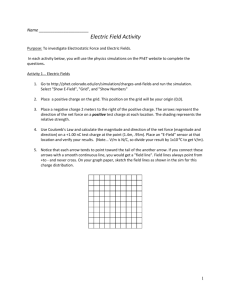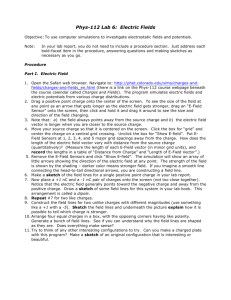23.14
advertisement
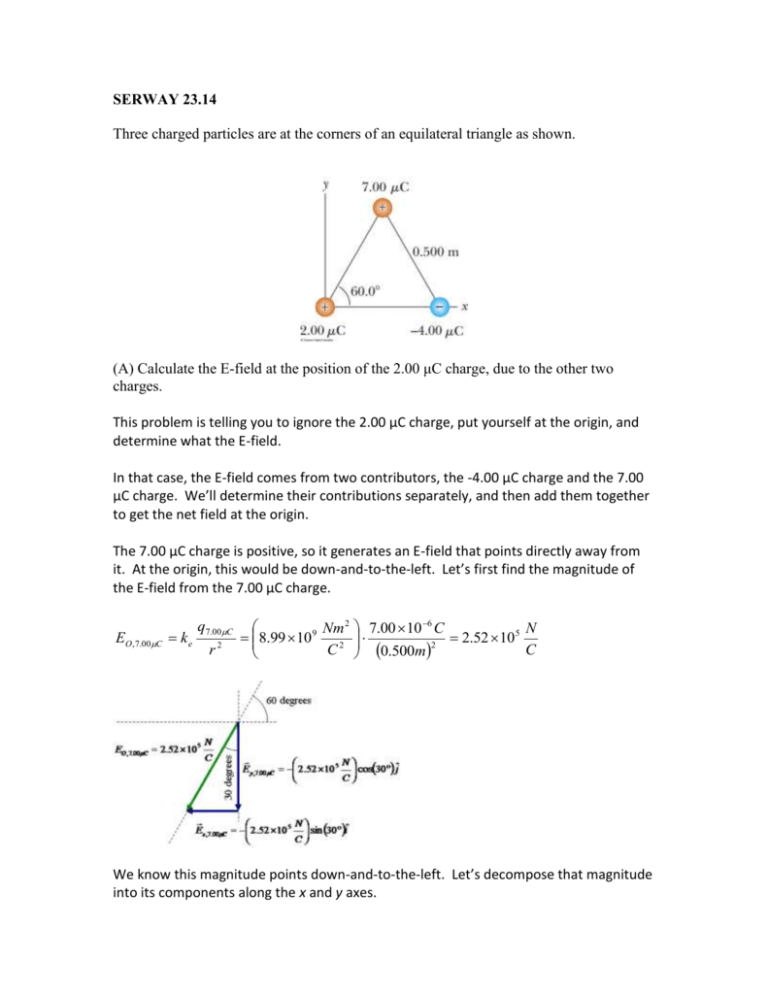
SERWAY 23.14 Three charged particles are at the corners of an equilateral triangle as shown. (A) Calculate the E-field at the position of the 2.00 μC charge, due to the other two charges. This problem is telling you to ignore the 2.00 μC charge, put yourself at the origin, and determine what the E-field. In that case, the E-field comes from two contributors, the -4.00 μC charge and the 7.00 μC charge. We’ll determine their contributions separately, and then add them together to get the net field at the origin. The 7.00 μC charge is positive, so it generates an E-field that points directly away from it. At the origin, this would be down-and-to-the-left. Let’s first find the magnitude of the E-field from the 7.00 μC charge. EO,7.00C k e q7.00C r2 2 6 N 9 Nm 7.00 10 C 8.99 10 2.52 10 5 2 2 C C 0.500m We know this magnitude points down-and-to-the-left. Let’s decompose that magnitude into its components along the x and y axes. E x , 7.00C 2.52 10 5 E y , 7.00C 2.52 10 5 N 5 N ˆ sin 30iˆ 1.26 10 i C C N 5 N ˆ cos30 ˆj 2.18 10 j C C Thus: N N EO , 7.00C 1.26 10 5 iˆ 2.18 10 5 ˆj C C Luckily, finding the field for the -4.00 μC charge is easier. Now we’re dealing with a negative charge, so it will generate a ‘pulling’ E-field at the origin. Since the -4.00 μC charge is located on the x axis, its field only points in the positive x direction. Finding the magnitude of the E-field due to the -4.00 μC charge: EO , 4.00C k e q 4.00C r2 Nm 2 4.00 10 6 C N 8.99 10 9 1.44 10 5 2 2 C C 0.500m We know this must point in the positive x direction, so: N EO , 4.00C 1.44 10 5 iˆ C Now, the net field at the origin will be the algebraic sum of the two contributing fields: N N N EO EO , 7.00C EO , 4.00C 1.26 10 5 iˆ 2.18 10 5 ˆj 1.44 10 5 iˆ C C C N N EO 0.18 10 5 iˆ 2.18 10 5 ˆj C C (B) Use the answer for part (A) to determine the force the 2.00 μC charge will experience at the origin. This is easy, it just goes back to the definition of the electric field: Fe E q Therefore, since we know the E-field at the origin, and we know how much charge the 2.00 μC charge has, we can rearrange the definition of the electric field to solve for force: N N Fe qE 2.00 10 6 C 0.18 10 5 iˆ 2.18 10 5 ˆj C C Fe 0.036 N iˆ 0.436N ˆj


